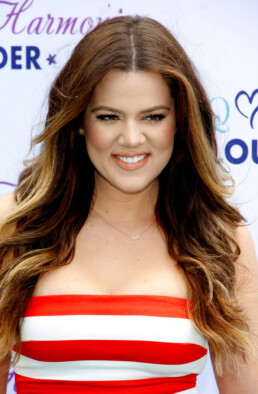How to pronounce Balayage?
Balayage (Pronounced BAH-LEE-AHGE) is a freehand hair colouring technique used to create highlights that blend into the hair with no obvious regrowth lines. It creates a natural gradation of lightness along the hair strands. The colour is deeper closer to the scalp and lighter toward the tips, although it generally focuses on the hair mid-shaft and toward the tips, not at the roots. It results in what hair stylists call a sun-kissed, natural look.
Balayage history
Balayage was invented in Paris in the 1970s. The name comes from the French verb, balayer, to sweep. It refers to the way colour is swept through triangular sections of your hair by hand, often with the aid of a brush and a paddle. It was originally called Balayage à Coton, referring to the cotton strips that colourists used to separate the coloured strands from the untouched ones. The technique became popular in North America in the 1990s, but is only now reaching a wide range of salons.
Where have I seen it?
Look to the red carpet. Models and stars like Chrissy Teigen and the Kardashians have helped to popularize the trend.


What’s the difference between Balayage and highlights?
Highlights is a broad term that refers to any strands of hair that differ from the base hair colour, no matter what technique is used. Classic highlights usually are defined and stripy and the regrowth line is noticeable. The colour runs from roots to ends and application requires foils, meshes or a highlighting cap.
Balayage, by contrast, is a highlighting technique that results in well-blended, vertical streaks. The highlight colour is placed strategically, with some brightening the roots, some the strands, some the tips. It is usually done superficially; the highlight colour is only applied to the top layer of hair, giving glimpses of the darker hair below. It blends dark and light hues seamlessly.
What Balayage will suit you best
Balayage is effective for all hair colours and cuts, except for very short crops. No two balayage hair styles are exactly alike, because balayage is done freehand and colourists select the pieces of hair to highlight for each individual. They generally do so according to your haircut or in order to draw attention to certain facial features. The final effect is curated especially for you; it’s bespoke.


How long does Balayage last?
Balayage looks natural as it grows out – none of those roots lines – so it doesn’t require you to get it done as frequently as classic highlights; expect your balayage to last three to four months.
What are the advantages of Balayage?
- Less hair damage: Less bleach is used to create balayage, since the hair isn’t saturated, so the chemicals don’t affect your hair as much.
- Less bleeding: While foils for classic highlights can bleed if placed too close together, in balayage, colourists use a barrier between sections to prevent bleeding from occurring (Remember Balayage à Coton?)
Are there any disadvantages?
- Grey matters: Balayage doesn’t cover grey hair; it simply helps to blend them into your style. If you are really getting grey, you’ll need to have your roots coloured before you can take advantage of balayage, and you’ll continue to need root touch ups every month or so.
- Tone matters, too: The natural tone of your hair – warm, neutral or cool – will influence the final look of your balayage. It also can turn brassy faster than hair that is coloured with classic highlights.
How to Care for Balayage Hair
Although you may be able to go for long periods of time without dyeing your hair, you’ll want to keep your hair looking fresh with a rich, hydrating hair mask to make it shine. Purple toning shampoo will balance any brassy tones that make an appearance in between balayage sessions. You may want to consider a glossing refresher visit after eight or 10 weeks to add tone back into your hair, condition it and seal the cuticle layer.
How do I make the most of balayage?
- Come prepared: Bring some photos of balayage looks and features that appeal to you to show your colourist.
- Come clean: Make sure your hair is clean before the process begins so it is most effective.
- Come conditioned: Prep your hair a few days ahead with a conditioning treatment; it will strengthen your hair to ensure minimal damage.
- Sport your go-to look: Your colourist will paint your hair differently if it's straight rather than curly, so come with the hairstyle you usually wear in order to ensure the colour is placed properly.

